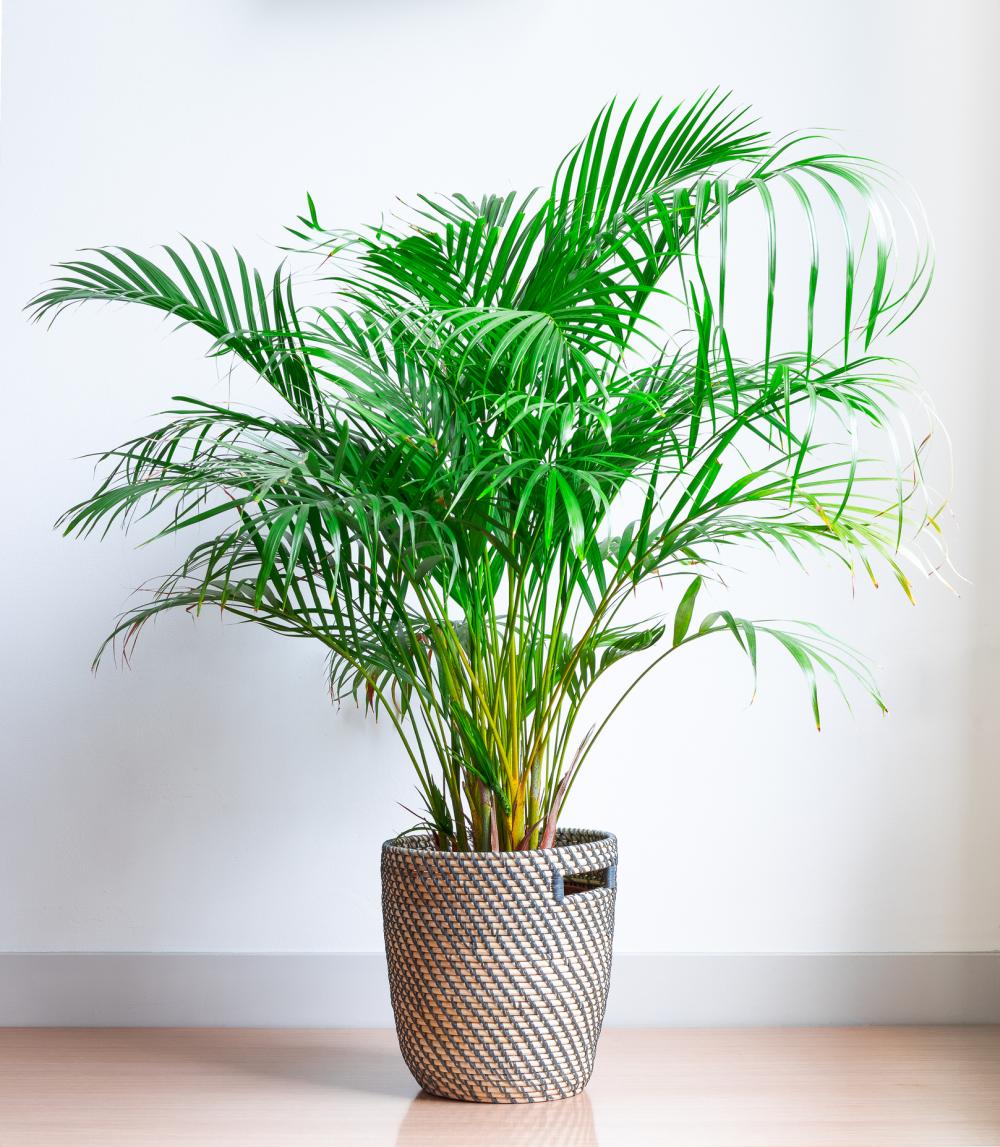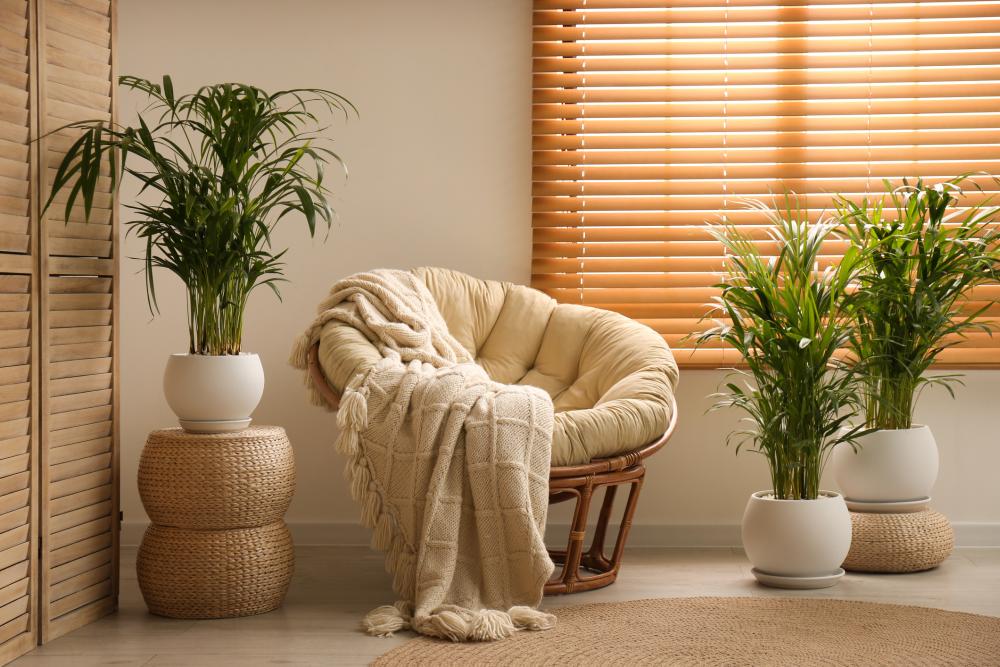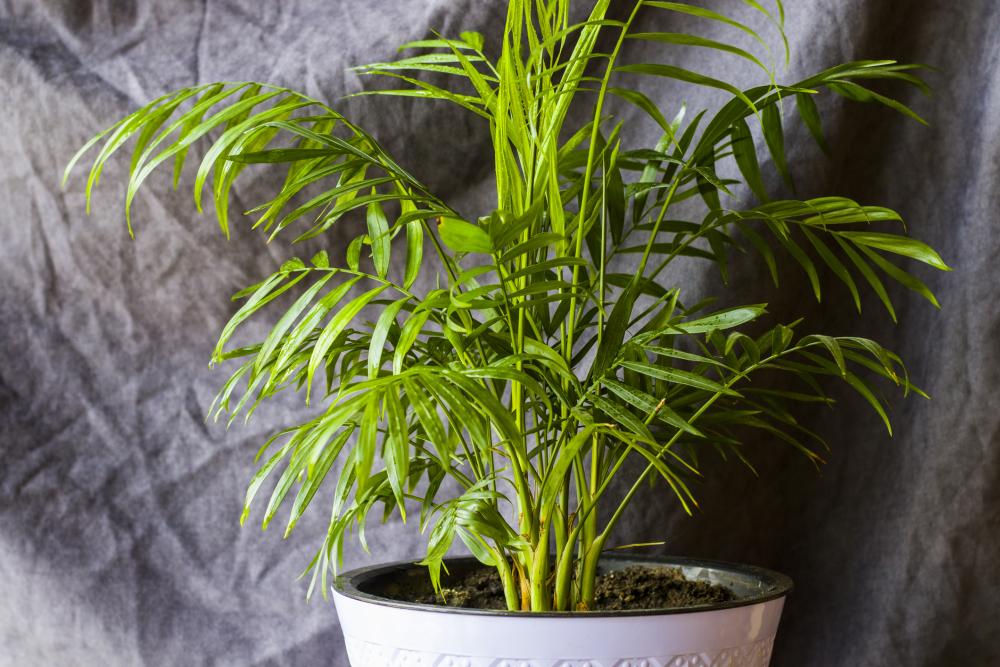Areca Palm Care – How To Grow And Care For Golden Cane Palm
The areca palm is not just an ordinary indoor palm you can grow in your house. It has exquisite charm and swaying fronds that immediately make it the focal point in your setting. But that’s not all. This palm is a flowering plant, and its pale yellow flowers open in the summer and complement the enchanting foliage.
Unlike many houseplants you grow, the areca palm is not fussy and will give you little trouble. It’s not a natural magnet for pests, and only one or two diseases afflict the tree, but they’re rare. So, for the most part, you’ll have a healthy and perennial plant that grows to the size and shape you desire.
Apart from a few little kinks that are easy to handle, this palm is overall a low-maintenance houseplant. Even if you grow it outdoors in the right hardiness zone, it will not put you out either in the growing or care phases. Read more to find out how to grow and care for the stunning areca palm.
All About Areca Palm
A native of Madagascar, the areca palm (Dypsis lutescens) was soon adopted in other regions of the world. It made its home in Central and South America as well the southern parts of the United States. Wherever the tropical sun shone, and humidity soared, the areca palm thrived and became a fixture of the scenery.
The mature tree averages between 10 to 30 feet tall and between 8 to 15 feet across. The vast spread is due to the different growing conditions. In the wild and growing outdoors, the palm will reach its full height of 30 feet. But indoors, as a potted plant, it will barely make it over 10 feet.
Another feature that makes the palm a good addition to your house plants is its safety. As a non-toxic plant, the areca poses no health risk to the pets or humans in the household. On the contrary, the supple fronds with their pairs of 30 to 40 slender leaflets create a cheerful corner for your children to enjoy the beauty of nature indoors.
As a tropical plant, the palm is more suited to zone 10. However, you can grow it indoors in just about any zone as long as you keep the temperature above 75 degrees F. during the day and around 65 degrees F. at nighttime. Humidity can be maintained with a humidifier or regular misting of the fronds.
Areca Palm Varieties
While the areca palm is by far the most popular palm houseplant, it has some relatives that compete with it. Betel Nut Palm (Areca catechu) and Triangle Palm (Dypsis decaryi) are two species that have their own unique qualities as indoor palms. But if you look outside this small family, you can have a wide array of palm varieties that are good candidates as houseplants. Here are some of them.
- Phoenix canariensis: Better known as the Canary Island Date Palm, this medium-size palm grows to about 65 feet tall and is native to the Canary Islands. However, indoors, the palm is a slow grower and will take about 15 years just to reach 10 feet. The only drawback is that the leaflets are stiff and pointy, which can be a hazard for small children.
- Rhapis excelsa: Also called Lady Palm, is native to Asia and has a bushy shape. However, with regular pruning, you can make it look like a tree with its circular fronds that shimmer in the light. As small palms that grow between 2 to 7 feet, they’re ideal as houseplants with their compact size and cheerful fronds.
- Yucca elephantipes: Commonly called the yucca palm, this hardy palm is native to Mexico and has a high tolerance for drought, partial shade, and different types of soil. It also has a slow growth rate, so you won’t have to repot it frequently or worry about giving it more space in your household.
How to Grow Areca Palm
As an ornamental houseplant, the areca palm is also easy to grow. In fact, you have more than one option to start this beautiful tree. You can start it from seeds, by division, or transplant a sapling you buy at the nursery. The last two are easy and straightforward enough. So we’ll focus here on germinating the palm seeds and starting an areca palm in easy steps.
- The seeds of the areca palm have outer skin as an extra layer of protection. You’ll need to scrub that skin off using a mesh and running water. Wash the seeds to remove any traces of the outer skin.
- Fill a bowl with warm water and drop the seeds in. Keep them in a warm place for a week to facilitate germination. The water needs to be replaced every day with fresh and warm water to avoid bacteria buildup.
- While the seeds are soaking, prepare the pot and potting mix. A medium-size terra cotta container with plenty of drainage holes at the bottom is ideal for your home. Choose a color that matches the bright green fronds of the palm and your home decor.
- Prepare your potting mix by combining 3 portions of peat with one portion of sand. Fill up the container until 2 inches from the edge. You can also add shredded pine park to enrich the soil with the organic material and improve drainage.
- Take out the soaked seeds from the bowl and sow each seed in its own container. The seeds should be only half-buried since they’re not getting any sun.
- Water the potting mix immediately and try not to dislodge the seed from the shallow hole.
- Keep the soil moist until the seeds develop the first roots.
- Move the pot to a window that gets the morning sun. As an indoor plant, the palm doesn’t need exposure to the full sun.
Areca Palm Care
Like many ornamental palms, the areca palm is easy to care for. But unlike other houseplants you have at home, this palm grows slowly, and its root system likes to be enclosed in tight containers. Being root bound is not a problem for the tree, so repotting is not a regular requirement. As for watering, feeding, and light requirements, they’re no different than other ornamental plants of this size.
Soil
If you’re growing the areca palm in a container as a houseplant, don’t use regular soil from the garden. Rather, you should use a potting mix more suited for the palm tree. It has to be peat-based and slightly acidic with pH levels between 6.2 to 7.0. Change the soil with every repotting. As for garden palms, you should mix peat with the soil at a ratio of 2:1 in favor of the soil. Make sure the soil is well-drained since the roots of the tree are prone to root rot in wet or waterlogged soil. You can also use coarse sand instead of peat to amend the soil.
Watering
As with most potted plants, the soil tends to dry out faster than the one in the garden. So you need to water the areca palm more regularly in the container. The goal of watering is to get the potting mix moist but not wet. If the water comes out of the drainage holes at the bottom of the container, then you’re overwatering the palm. Allow the top 2 inches of the soil to dry out completely between irrigations. For garden palms, give the tree one inch of water every week during the growing season for the first 2 years. Cut back on watering in the fall and winter.
Light
Light conditions are so crucial for the areca palm that they need some elaboration. During the spring and summer, the tree needs bright light not just falling on the fronds but also flooding the room where you keep it. Indirect light doesn’t help the tree grow, and the palm will struggle in a dimly lit room or when it doesn’t get direct sunlight exposure. To ensure that your palm is happy, place it on a window sill facing the west or south. If you notice the leaflets of the fronds turning yellow, that’s a sure sign, the palm is not getting enough light.
Fertilizer
The areca palm is a heavy feeder. Poor nutrients in the soil or potting mix can stunt the tree’s growth and reflect on the health and quality of the fronds. When preparing the potting mix, add organic materials at a ratio of 2 cubic inches per one cubic foot of potting mix. Side dress the palm with rabbit manure compost tea and other balanced liquid fertilizers. For garden palms, mix in rotted manure before planting the sapling or seeds. To encourage a faster growth rate, use nitrogen-high custom fertilizer with a 10-5-10 label.
Temperature and Humidity
For a subtropical tree, the areca palm thrives in temperatures between 65 to 75 degrees F. during the daytime and 60 degrees F. at night. The tree is also quite sensitive to cold drafts and open windows. During windy days and chilly conditions, keep the tree tucked in a warm corner. A heat mat might come in handy to keep the soil temperature within the required range. Don’t let the temperature dip below 55 degrees F.
As for humidity, the palm tree is used to normal humidity levels. However, if you use a cooling system 24/7 inside your home, that could drain the air of humidity. Signs the palm is struggling with dry air include leaf tip burn. Use a humidifier or mist the palm twice a week to increase the humidity levels around it.
Pruning
For an ornamental plant that grows to about 10 feet, the areca palm is low-maintenance. It takes its time to grow, so you won’t need to be extra vigilant for any wayward fronds or worry about the palm growing out of control. In fact, for the most part, you’ll just leave the palm to do its thing without interfering. Occasionally, you’ll need to remove a dead frond or a damaged one. Other than that, the palm maintains its natural shape without much help from your pruning shears.
Pests and Diseases
Potted areca palms growing indoors are perfectly safe from pests and diseases. The only problems you’ll encounter with this palm are ones caused by inadequate growing conditions. The most common issue is the leaf tip burn. It’s a sign the plant is stressed due to overwatering, a drop in temperature, or dry soil. Adjusting your watering patterns and ensuring the temperature doesn’t drop below 55 degrees F. will fix this problem.
Overwatering can also cause a fungal infection called pink rot. The crown of the palm gets covered in pink growths that contain the spores of the fungus. They might also appear on the fronds. You’ll need to remove any infected fronds and repot the palm. Inspect the roots for any damage and use a fresh potting mix.


